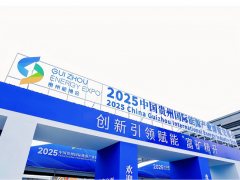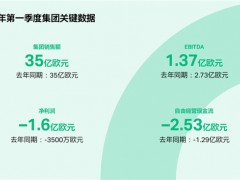撒哈拉以南非洲的人口預計到2050年將翻倍,導致未來十年內能源需求預計增加三分之一,并迫使電力發電能力到2065年實現10倍增長
非洲擁有豐富資源,如天然氣、陽光、風能和稀有礦物,為可再生能源增長創造了巨大潛力
挑戰在于確保非洲的可再生能源生產能力能否滿足其迫切的能源需求,并實現脫碳目標
據油價網7月29日報道,非洲電氣化將成為全球清潔能源轉型中最重要的挑戰和有前途的經濟機遇之一。撒哈拉以南非洲的人口是世界上增長最快的,預計到2050年將翻倍。為了讓讀者有個概念,到中世紀,地球上四分之一的人口將在撒哈拉以南非洲地區。考慮到非洲人口在全球舞臺上的重要性,以及將這些人連接到清潔可靠能源的需求,非洲在全球范圍內對氣候目標構成重大挑戰。
隨著撒哈拉以南非洲地區的增長和工業化,非洲能源需求預計未來十年將增加三分之一。滿足這一需求將需要到2065年實現電力發電能力的10倍增長。問題是,為了符合脫碳的要求,非洲必須“跨越式發展”,直接采用最先進(且相對昂貴)的綠色技術,而不是像其他貧困國家的經濟發展通常經歷的階段。
如今,非洲大陸仍有6億人缺乏能源供應。然而,雖然大多數經濟體在發展經濟時有幸處于可以無限制燃燒化石燃料的時代,非洲面臨的卻是直接采用尖端(且相對昂貴)的綠色技術,這在歷史上幾乎是前所未有的必要性。
諷刺的是,盡管非洲目前是全球能源貧困最為集中的地區之一,但它也是可再生能源產能增長潛力最大的市場之一。該大陸擁有極為豐富的天然氣資源(被視為邁向更潔凈能源的跳板),以及充沛的太陽能、風能和極為搶手的鋰、鈷等稀有土壤礦物,這些是光伏太陽能電池板、鋰離子電池、電動汽車和可再生能源儲存等關鍵組件。
外國投資者已經涌入非洲,以開發能源資源以確保自身的能源安全。歐洲國家也越來越多地進入北非地區,在撒哈拉沙漠建設大規模太陽能電站。現在,在幾十年的衰退后,撒哈拉以南非洲地區的制造業正在呈上升趨勢,而非洲制造的太陽能電池板已經與其他地區制造的太陽能電池板在成本上開始競爭。
盡管非洲幾乎可以確定將成為全球能源市場的下一個熱點,但并不能保證這種新發現的可再生能源產能可以滿足非洲自身能源電網的巨大和緊迫需求。相反,可再生能源供應鏈正在被外國國家建立,以滿足這些國家的需求。這是一個兩難的境地。非洲迫切需要通過這些合同所提供的資金,但同時也迫切需要盡可能獲得所有能源。畢竟,非洲大陸一半的人口缺乏可靠的能源供應,這是發展的基本障礙。
此外,這些可再生能源資源對于非洲實現脫碳目標和“跨越式”發展脫離化石燃料是絕對必要的,這對整個地球都是凈收益。但問題再次出在資金上。富裕國家有錢發展這些供應鏈(以滿足自身需求),但對于非洲來說,情況就不同了。發表在《科學報告》雜志上的最新研究估計,要實現非洲用可再生能源供電的最低投資成本將達到2980億美元。
胡耀東 譯自 油價網
原文如下:
Africa's Green Energy Leapfrog
Sub-Saharan Africa's population is expected to double by 2050, leading to a predicted increase in energy demand by a third over the next decade and necessitating a ten-fold increase in power generation capacity by 2065.
Africa has abundant resources such as natural gas, sunshine, wind, and rare Earth minerals, creating significant potential for renewable energy growth.
The challenge lies in ensuring that Africa's renewable energy production capacity is harnessed to serve its own urgent energy needs, as well as achieving decarbonization goals.
Electrifying Africa is going to be one of the most significant challenges (and promising economic opportunities) of the global clean energy transition. The population of sub-Saharan Africa is the fastest growing in the world, expected to double by 2050. To put that in perspective, by midcentury one in four people on the planet will be in sub-Saharan Africa. Considering the significance of the African population on the global stage, and the need to connect those people to clean and reliable energy, the continent poses a significant challenge for climate goals on a global scale.
As sub-Saharan Africa grows and industrializes, African energy demand is expected to increase by a third over the next decade. Meeting this demand will require a ten-fold increase in power generation capacity by 2065. The problem is that in order to comply with decarbonization imperatives, Africa has to “leapfrog” over what is normally the next phase of development in a poor nation’s economic journey. Today, 600 million people across the African continent still lack access to energy. But while most economies had the good fortune of developing their economies in an era where there was no pushback for burning as many fossil fuels as suited them, African leaders are facing the necessary and virtually unprecedented necessity of skipping straight to cutting-edge (and comparatively expensive) green technologies.
The irony is that while Africa represents the greatest concentration of energy poverty in the world today, it also represents one of the most significant markets for renewable energy production growth potential. The continent is extremely rich in natural gas (considered to be a stepping stone away from dirtier fossil fuels like coal and oil), as well as abundant sunshine, wind, and highly sought-after rare Earth minerals such as lithium and cobalt which are essential components of renewable technologies including photovoltaic solar panels and lithium-ion batteries for electric vehicles and renewable energy storage.
Foreign investors are already flooding Africa in order to develop energy resources in order to shore up their own energy security. European countries are increasingly pushing into Northern Africa to build mass-scale solar farms in the Sahara Desert. Now, after decades of decline, manufacturing in sub-Saharan Africa is on an upward trend, and solar panels built in Africa are already cost-competitive with those built in other countries.
While Africa is all but guaranteed to be the next big thing in global energy markets, however, there is no guarantee that this newfound renewable energy production capacity will meet the enormous and urgent demand of Africa’s own energy grids. Instead, renewable energy supply chains are being established by foreign countries in order to serve the needs of those foreign countries. It’s a dilemma. Africa direly needs the money offered through such contracts, but it also desperately needs all of the energy it can get. After all, half of the continent’s population lacks reliable access to energy – a fundamental barrier to development.
Furthermore, those renewable energy resources are an absolutely necessary piece of Africa’s ability to reach decarbonization goals and “leapfrog” fossil fuels – which is a net gain for the entire planet. But the issue, once again, is money. Rich countries have the money to develop those supply chains (for their own needs) – but for African, it’s another story. A recent study published in the journal Scientific Reports calculates that the cheapest investment cost from all case scenarios that would achieve a renewable energy-powered grid in Africa would be $298 billion.
免責聲明:本網轉載自其它媒體的文章及圖片,目的在于弘揚石化精神,傳遞更多石化信息,宣傳國家石化產業政策,展示國家石化產業形象,參與國際石化產業輿論競爭,提高國際石化產業話語權,并不代表本網贊同其觀點和對其真實性負責,在此我們謹向原作者和原媒體致以崇高敬意。如果您認為本站文章及圖片侵犯了您的版權,請與我們聯系,我們將第一時間刪除。







